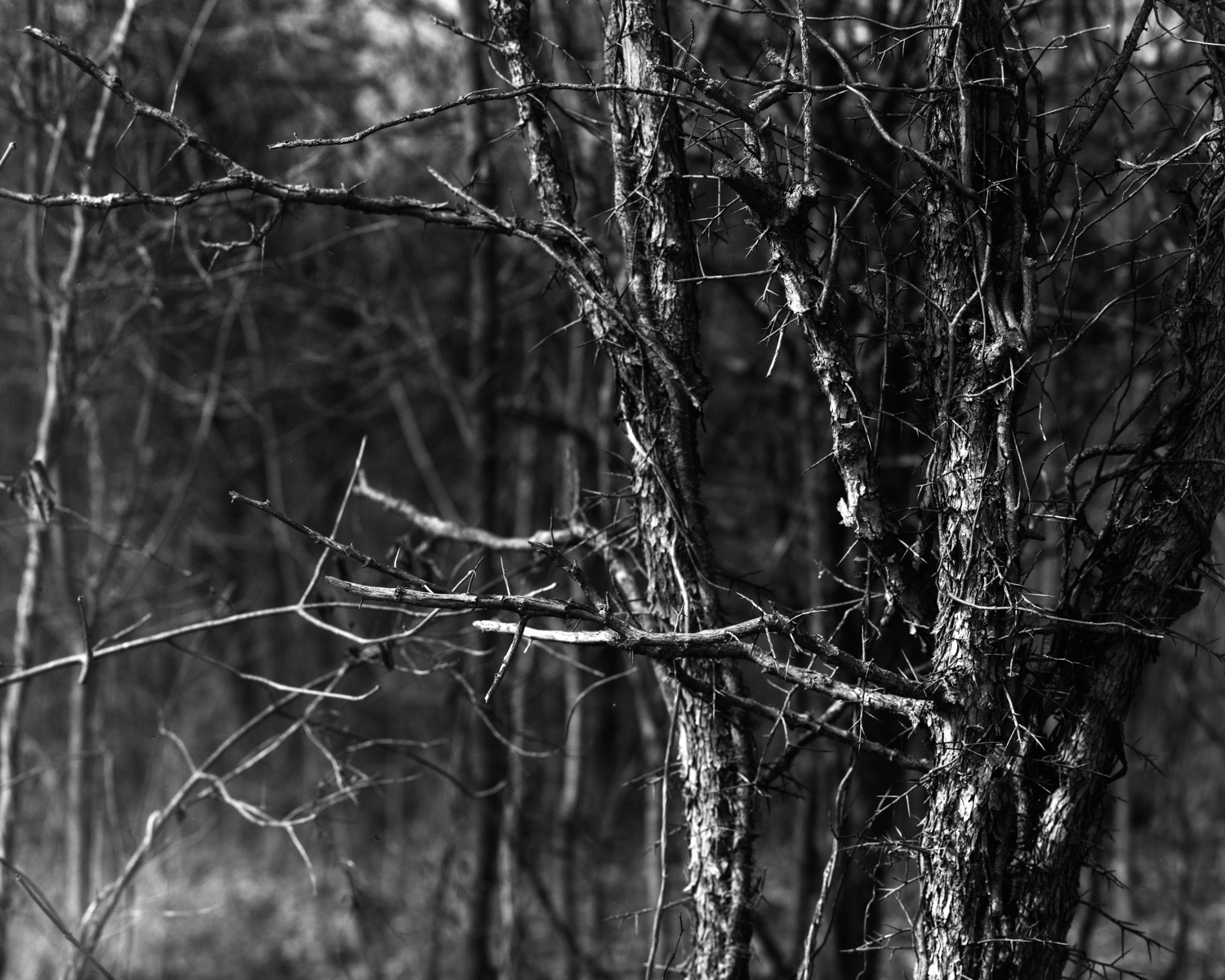Working with Large Format X-Ray Film...Continued
UPDATE! Everything this post contains and more can be found in my overview video above.
Since first blogging about x-ray film two years ago, I've gained a little more experience (~300 sheets more!) with this film and would like to pass a few things on to you fine ladies and gents. In no specific order, here they are:
EVERY Large Format Photographer Needs X-ray Film in His/Her Fridge
Let's face it folks, panchromatic films are getting pricier by the day, especially in the 4x5 and up sizes. X-Ray films, at their most premium, are still half the price of high end Kodak and Ilford B&W emulsions. At their cheapest, x-ray films run nearly $0.40 / sheet, which is cheaper than photographic paper! This means a film that can be loaded and developed under a safe light, AND is worlds faster than orthochromatic silver gelatin papers. Got light leaks? Test 'em out with this stuff! Sorry 16x20 and 20x24 shooters, no help for you guys here, but there is always 14x36" x-ray film.
The Double-Sided Emulsion of X-Ray Film is Tricky
X-Ray film can be a little finicky to deal with, and can not, by any means, be handled the way you would any other film. Handle it without gloves, there will be fingerprints, man-handle it during processing, and there will be scratches. Fail to prewash it, and there will be uneven absorption into the dual-emulsion. With a gentle hand, a few pairs of nitrile gloves, and hangers and tanks for processing (see video below), x-ray film becomes a manageable, consistent film. Word to the wise, if you plan on tray processing this film, you will waste film, time, and what little patience you entered the darkroom with.
Orhthochromatic Means Red Things Go Dark, Very Dark
A film that can only see blue and green spectra of light doesn't get along very well with light reflecting off of red objects. Red leaves go dark grey, red bricks go darker, and red shirts and skin blemishes become quite prominent and dark. Without conscious effort to work around this spectral shortcoming, even the kind of light you're shooting in can become your own worst enemy. Top things to avoid with x-ray film: red backgrounds, red shades of lipstick, and hot lights!This is Not a Low Contrast Film
X-ray film, when processed in standard developers, builds contrast very quickly. A quick glance at any x-ray shooters' developing times will show you that even very dilute solutions have a time of < 10 min. Even in my highly dilute Pyrocat staining developers, I'm developing for ~6 min., give or take, depending how it looks under the red safelight (develop by inspection). Taming contrast with green x-ray film can be accomplished with some yellow/pale yellow filtration during exposure. In otherwise "flat" light, x-ray film at "N" (normal processing) will provide you contrast equal to N+1 development with conventional films. In contrasty light, prepare for some even more contrasty (still scans well) negatives.
Lately, I've been experimenting with ultra-low contrast dilutions of catechol-baed pyro developers, namely Pyrocat HD and Obsidian Aqua. Instead of normal dilutions of 1:1:100 for Pyrocat HD and 1:500 for OA, lower contrast solutions of 1:1:150 and 1:1000 have been working out much better. Unlike Pyrocat HD, Obsidian Aqua doesn't have a restrainer, so one has to be very careful in watching x-ray film develop (that contrast builds quickly!).Shoot it Quickly, Shoot it Often
Going hand-in-hand with how touchy x-ray film is, from my shooting experience, x-ray film doesn't have as long a shelf life as modern, protected emulsions. While x-ray film doesn't mind being frozen for storage, it keeps for only ~1 year in controlled 68 degrees Fahrenheit environment. In warm temperatures, the emulsion can deteriorate even faster, so don't even think about leaving loaded film holders in a warm car/trunk. Fortunately, it's low cost and high availability allow it to be a film you can have fun with! Not ready to commit that $10 sheet of B&W? Bracket off a 5-stop range on x-ray and see what happens!
Below is a quick sampling of some recent work shot on x-ray film. A mix of portraiture and nature work provided to highlight the nature of x-ray film. All images shot with an 8x10" camera and Fuji HR-T green sensitive x-ray film, rated @ 200 ASA, developed in Pyrocat HD 1:1:100.
If you're interested in trying x-ray film and looking to source some, my recommendation is trying a pack from the Film Photography Project Store. They ship quickly, worldwide, and every transaction there helps the FPP continue its bi-monthly podcasts and affiliated content. And if you ever have any questions about working with x-ray film, feel free to ask in the comments, or use the contact form to send me an email.
Until next time, keep on shooting, and if you're working with large format, might as well save a buck and shoot some x-ray film!




